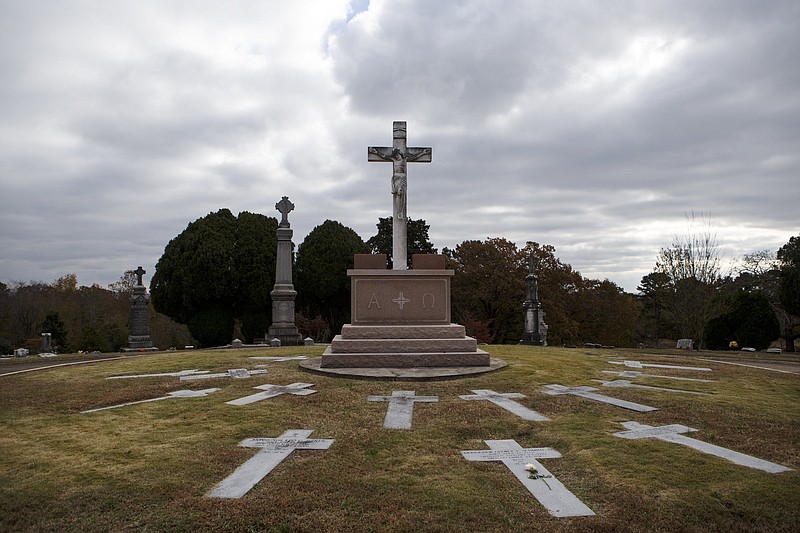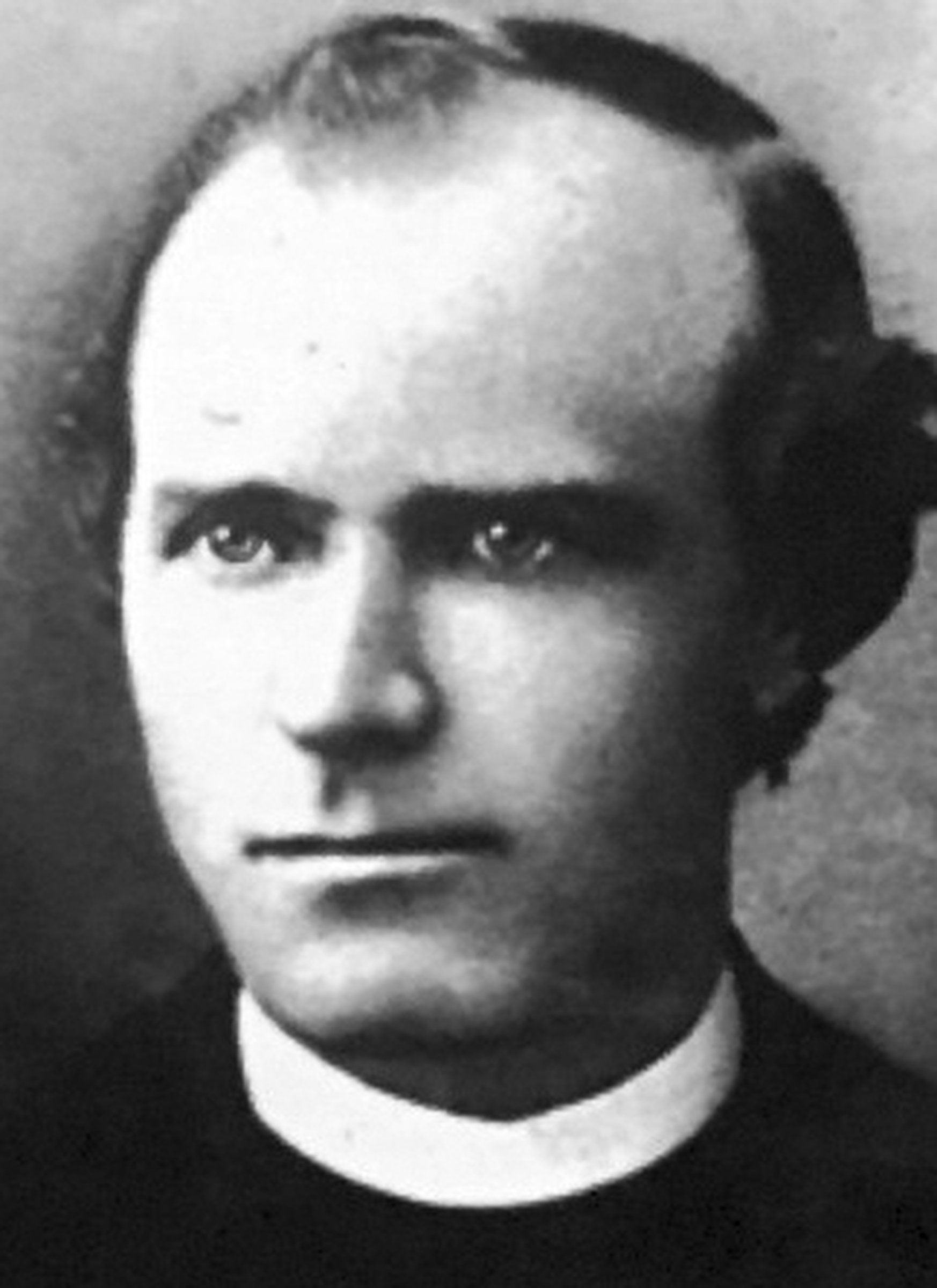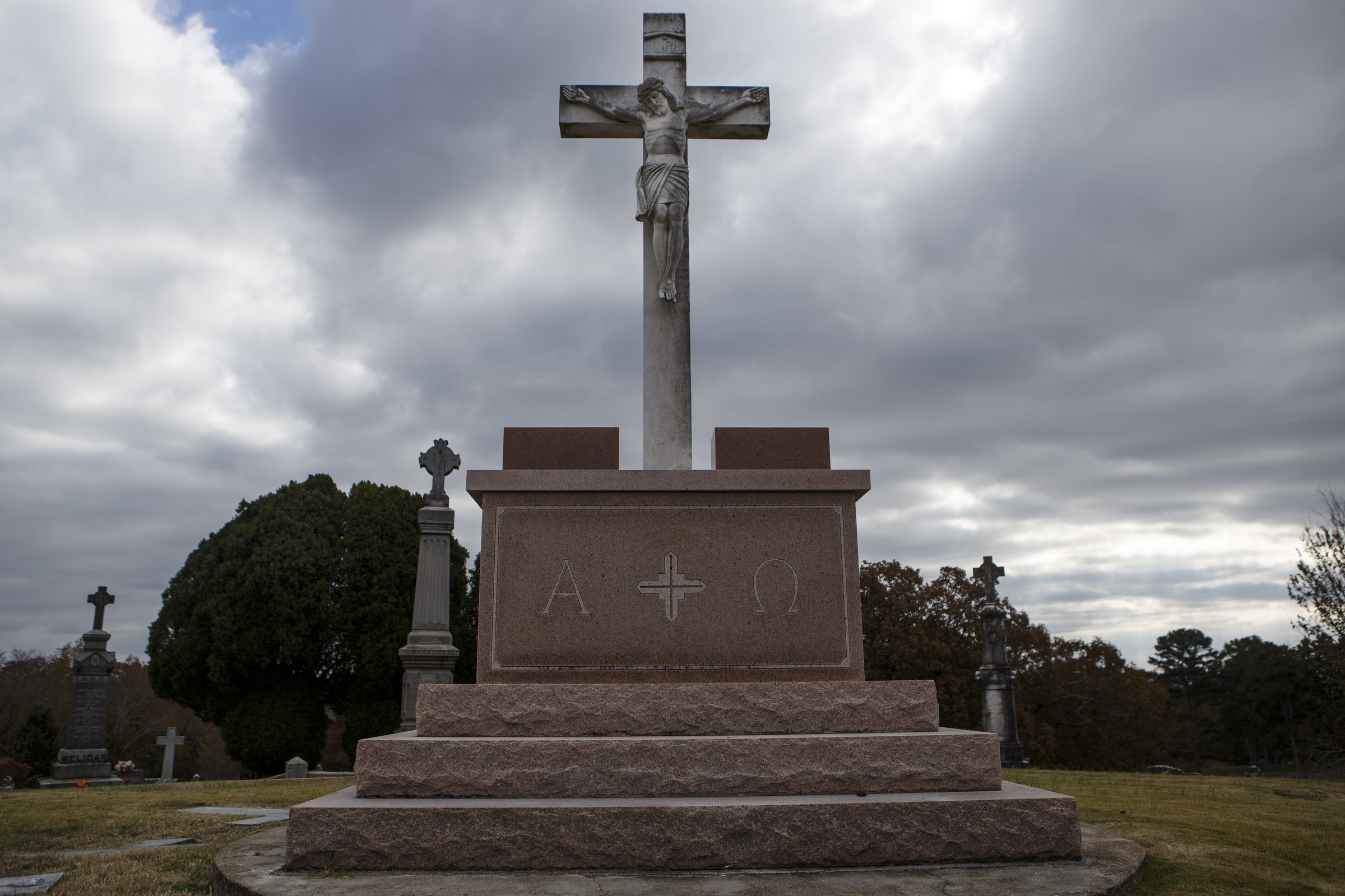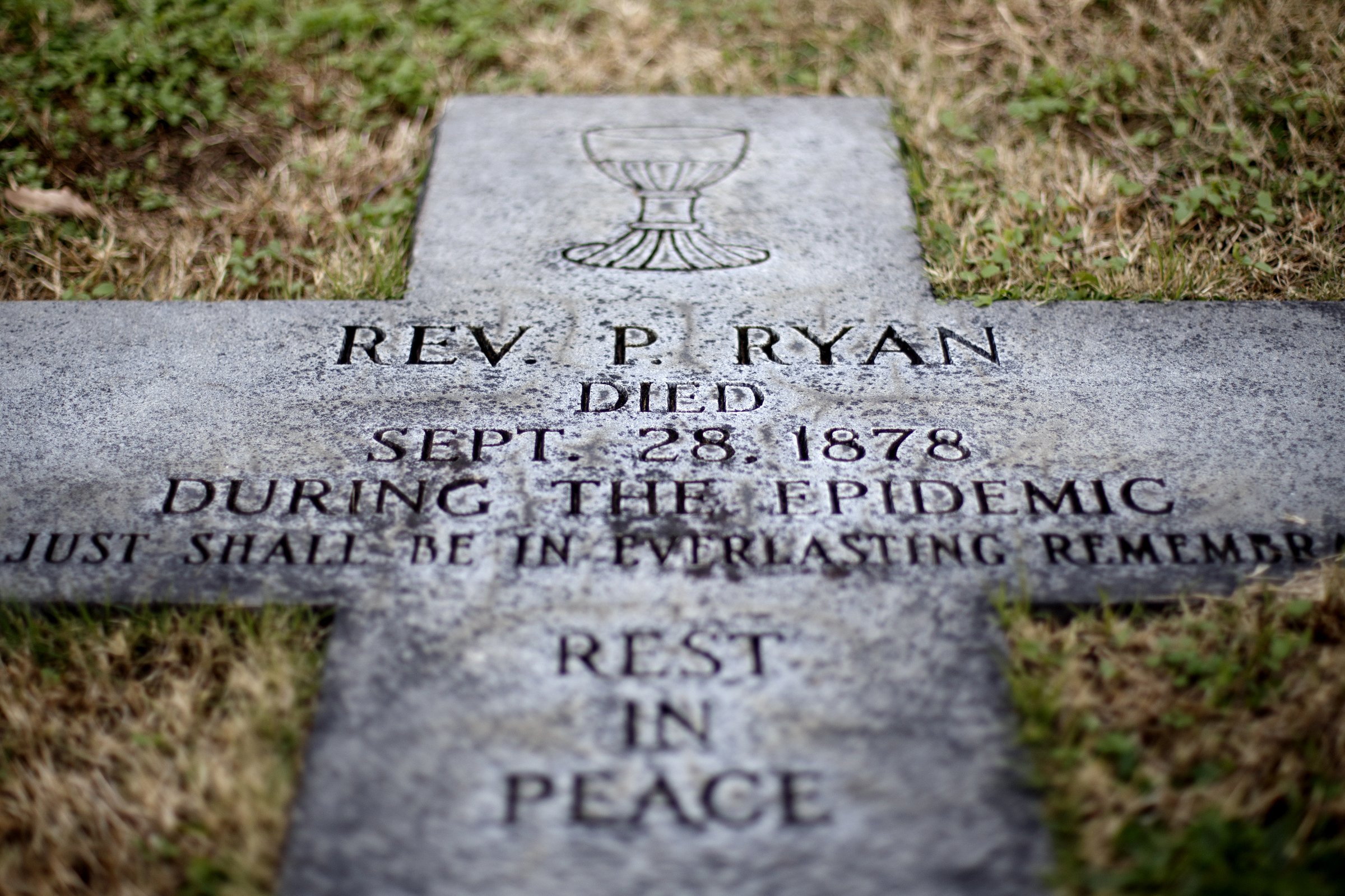EAST RIDGE, Tenn. - At the top of Mt. Olivet Cemetery, with the sun shining at his back and the sound of afternoon traffic echoing nearby, a marble Jesus Christ hangs from a cross. Below him, a ring of graves marks the lives of notable Catholic pastors.
One is the Rev. Patrick Ryan, who died Sept. 28, 1878, at age 33, while tending to the sick during a yellow fever epidemic in Chattanooga that claimed 366 lives and saw about 80 percent of its population flee.
"The just shall be in everlasting memory," his gravestone reads.
But his gravestone may not be here much longer.
As part of a two-year, first-time effort to get sainthood status for a deceased Tennessee pastor, the Roman Catholic Diocese of Knoxville wants to dig up Ryan's remains and move him to the Basilica of Sts. Peter and Paul on Eighth Avenue. As first reported by Courthouse News, the diocese filed a petition earlier this month asking for a judge's order that would allow the Chattanooga-Hamilton County Health Department to get started on the exhumation.
The department, which has until Dec. 9 to respond, likely will not oppose the effort, said Assistant Hamilton County Attorney Nell Southerland. The question moving forward, she said, is whether judges have the power under Tennessee law to issue such orders when no known relatives exist.
"Right now, Tennessee state codes make allowance for a permit process to exhume a body [and] move it, but that process requires that you have a living descendant," said Chattanooga attorney Terrance Jones, a parishioner at the downtown basilica who is representing the diocese in this matter. "The relief built into the code says anybody can file a petition with a competent court to seek an instruction ... to issue a permit. So that's really the only path we had."
Diocese researchers who are building a case for sainthood say Ryan is not known to have fathered any children and therefore has no descendants. According to an affidavit attached to the petition, his family emigrated from County Tipperary, Ireland, to New York in the 19th century. But a review of emigration records shows Ryan is the most common surname in County Tipperary, the affidavit says, and the diocese was unable to conclusively determine if any of the 25 potential Patrick Ryans were Father Ryan.
Achieving sainthood is an intensive, four-step process that requires approval from the Vatican at various points. Traditionally, pastors had two grounds for going about it: living heroically or being killed because of hatred for the faith, also known as martyrdom, said David Carter, pastor of the Chattanooga basilica and canon lawyer for the Knoxville diocese.
"But now [the faith has] discerned this third path - the offering of one's life," Carter said, adding that local parishioners discovered that information during a 2016 trip to Rome. "Patrick Ryan was the pastor of the Catholic church here, and when the yellow fever came to town, instead of fleeing, he heroically administered to the people knowing its dangers. In fact, he desired to put himself in harm's way."
Unearthing Ryan's body is a crucial part of the process because the diocese must confirm he existed and is not folklore or a "pious legend." But there's strong proof in this regard: Old newspaper clippings and letters between clergy members and Ryan, who volunteered to go to Memphis when the fever first broke there.
After entering St. Vincent's College in Cape Giradeau, Missouri, in 1866 to study for the priesthood, Ryan was ordained in Nashville in 1869 and later sent to Chattanooga, church records show. Here, he was responsible for opening Chattanooga's oldest private school, Notre Dame.
When he died, Ryan requested he be buried among his people, the diocese petition says.
Though he was initially buried in a church building that would become the Basilica of Sts. Peter and Paul, Ryan was moved to Mt. Olivet Cemetery when it opened in 1886, carried by a procession of horse and buggy. The Chattanooga Times, as it was then called, published an editorial hailing his "unselfish and efficient work" during the epidemic. The editorial mentioned witnesses who saw Ryan cheerfully going door to door in the "worst infected section of the city" at the time.
Ryan has already cleared one hurdle of sainthood by being declared a "Servant of God." But ultimately, a pastor must have two miracles associated with them to be canonized. And those miracles must be verified through tribunal hearings that would likely happen in Rome.
How does one prove miracles after death?
"You have to prove causation that your prayer, to God, through the intercession of this [priest] was cause of the miracle," said Gaspar DeGaetano, a deacon at the basilica of Sts. Peter and Paul who has been involved in seeking sainthood for Ryan since 2016. "For example, we had a case of a lady who was praying for her husband, who had an aneurysm, and the doctor said we can't operate on it. They had an image of it, and they claimed a second image showed it went away. So we had a radiologist look at it, and sadly it was the same before and after. But if we had photographic evidence ... that it went away, then certainly that would be a potential miracle."
DeGaetano is looking for people who believe they've experienced miracles. Once parishioners finish researching Ryan's life, once his body is legally allowed to be unearthed and once the diocese receives evidence of two potential miracles, all of this information could find its way to the Vatican.
In the meantime, DeGaetano said, those looking for favor through Father Ryan's spirit can say this prayer:
"Heavenly Father, through the intercession of the Servant of God, Patrick Ryan, may I be granted the favor I seek. ... I ask this in the name of Jesus, Your Son who lives and reigns with You and the Holy Spirit, one God forever and ever, Amen."
Contact staff writer Zack Peterson at zpeterson@timesfreepress.com or 423-757-6347. Follow him on Twitter @zackpeterson918.



